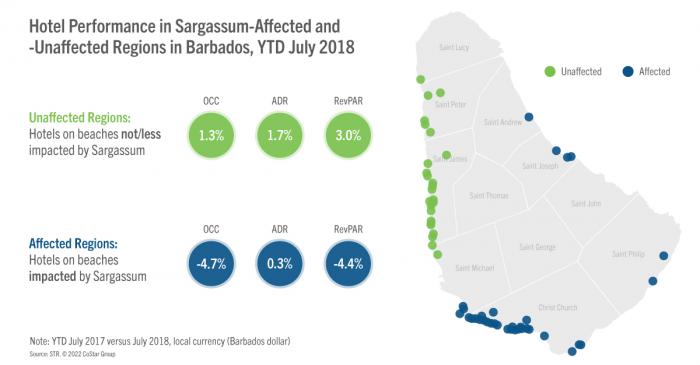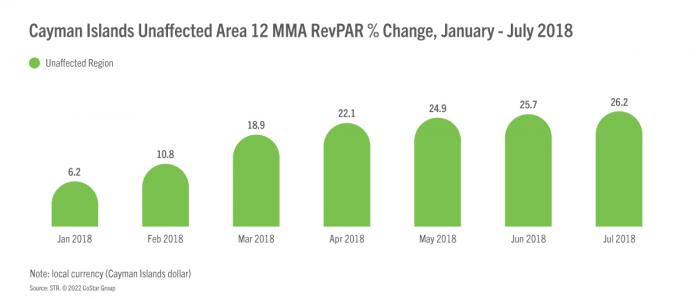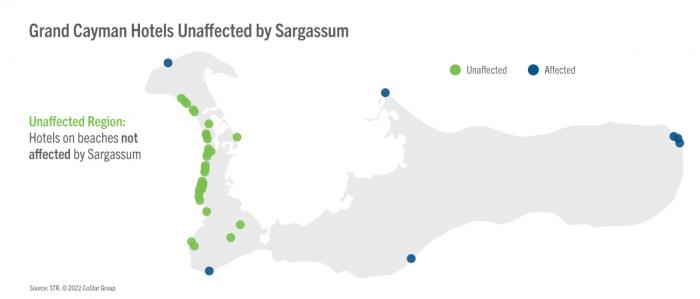The upcoming summer travel season is an especially important one for the Caribbean and Mexico hotel industries. While performance recovery has ramped up as 2022 has progressed, this summer will be the first of the pandemic-era with travel restrictions lifted in many of the Caribbean’s tourism source markets as well as in key islands in the region. Mexico has been further along in recovery, which has expectations for the summer even higher.
However, in addition to challenges that still exist from the pandemic, hoteliers may face additional headwinds from high levels of Sargassum seaweed blooms. In addition to environmental concerns, Sargassum presents an issue for destinations because its unpleasant smell and presence can discourage beachgoing tourists.
According to a recent bulletin from the University of South Florida Optical Oceanography Lab, the Caribbean Sea, the Gulf of Mexico, and the Central West Atlantic region saw historical April levels of Sargassum with increases expected through July.
To help Caribbean and Mexico hotel industry stakeholders understand the potential impact from Sargassum blooms, we pulled key points from a previous STR analysis focused on performance in the Caribbean. Additional performance variables at the time of the last major Sargassum bloom make it difficult to isolate the potential impact in Mexico.
Impact in 2018 and 2019
Caribbean hotel occupancy dipped year over year during the seaweed blooms of 2018 and 2019. For context, however, the declines were not nearly as significant as those observed during hurricanes. For example, the region observed a double-digit drop in occupancy in September 2017 due to Hurricane Irma and then a 9% drop in 2018 October as a result of Hurricane Michael.
In terms of average daily rate (ADR), hotelier pricing power remained strong despite occupancy fluctuations amid Sargassum blooms.
From the previous analysis, Barbados and the Cayman Islands were good examples of the performance dichotomy between areas affected and unaffected by Sargussum.
Hotels located in Barbados unaffected by Sargassum experienced a year-over-year increase in RevPAR (+3%) in the January-July year-to-date period (2018), whereas hotels located in the affected region reported drops in occupancy (-4.7%) and RevPAR (-4.4%).


